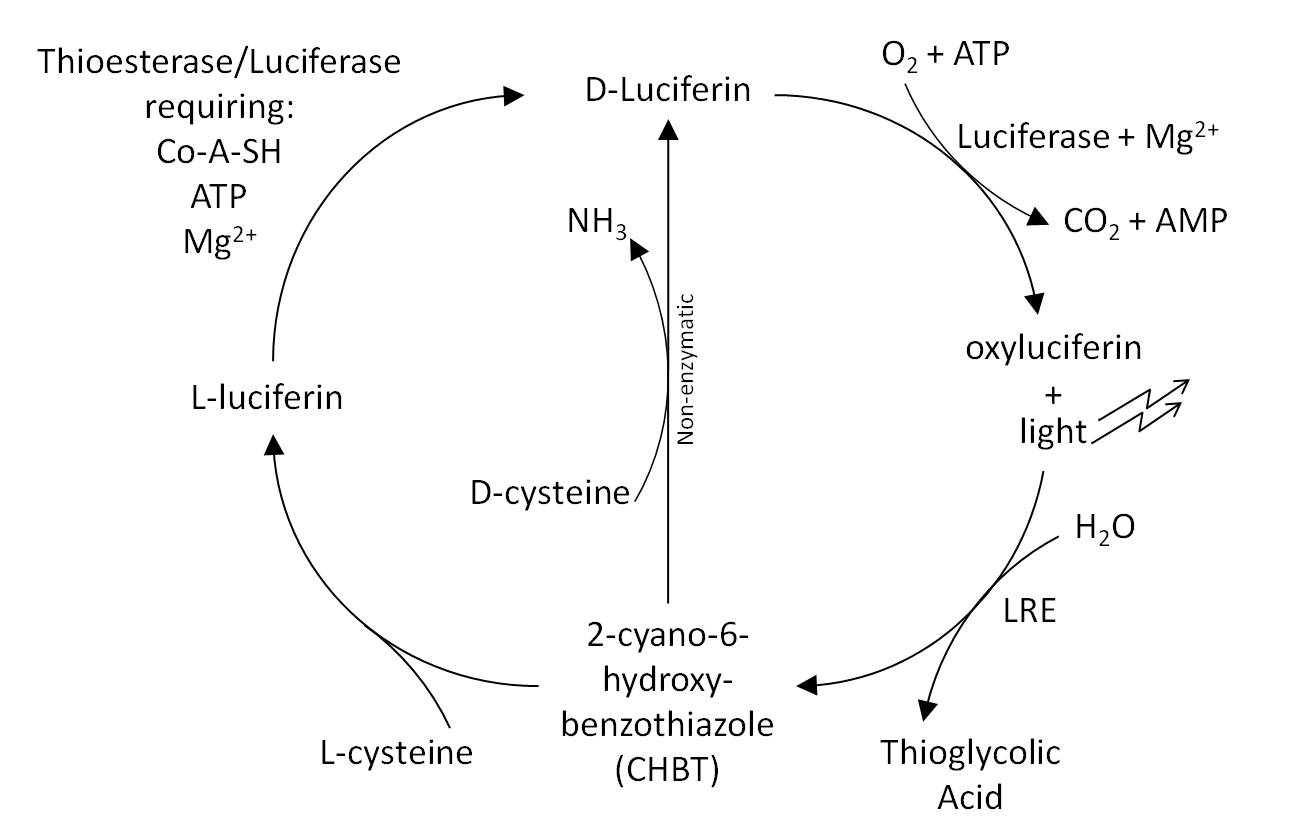Team:Cambridge/References/ProjectBioluminescence
From 2010.igem.org
Peteremmrich (Talk | contribs) (→Bioluminescence) |
Peteremmrich (Talk | contribs) (→Amazing mutant) |
||
| Line 10: | Line 10: | ||
==Amazing mutant== | ==Amazing mutant== | ||
| - | paper on cloning the lux operon from Ponyfish Photobacterium leiognathi into E.coli, by the E.coli mutant 43R the luminescence output could be increased dramatically to near native levels. --> find out what 43R does! | + | paper on cloning the lux operon from Ponyfish Photobacterium leiognathi into E.coli, by the E.coli mutant 43R the luminescence output could be increased dramatically to near native levels. --> find out what 43R does! [http://www3.interscience.wiley.com/cgi-bin/fulltext/120766166/PDFSTART Chan et al. 1991] suspects negative effectors in wild-type E.coli, but not in the mutant or in P.leiognathi, inhibit luminescence. If this is the case, it might be difficult to mimic the mutant phenotype with genes imported on a plasmid. |
| - | [http://www3.interscience.wiley.com/cgi-bin/fulltext/120766166/PDFSTART Chan et al. 1991] | + | |
==ADLA== | ==ADLA== | ||
Revision as of 21:14, 23 July 2010

Bioluminescence
The Plan
- Characterise the transfer function of PoPs + CHBT --> Light
The Theory
- The Luciferin Cycle:
Amazing mutant
paper on cloning the lux operon from Ponyfish Photobacterium leiognathi into E.coli, by the E.coli mutant 43R the luminescence output could be increased dramatically to near native levels. --> find out what 43R does! [http://www3.interscience.wiley.com/cgi-bin/fulltext/120766166/PDFSTART Chan et al. 1991] suspects negative effectors in wild-type E.coli, but not in the mutant or in P.leiognathi, inhibit luminescence. If this is the case, it might be difficult to mimic the mutant phenotype with genes imported on a plasmid.
ADLA
The Abrupt Decline in Luciferase Activity is a phenomenon described for bacterial luciferase in E.coli in stationary phase of growth (see [http://www.springerlink.com/content/w73k840k27866462/fulltext.pdf Koga et al. 2005]) The paper identifies two mutants, HupA and an N-terminal deletion of H-NS for which ADLA does not occur. hns205, the mutation necessary for quiescence is a C-terminal deletion. We should find out whether the phenotypes are the same, which would be sweet if we ended up doing quiescence as well.
 "
"
